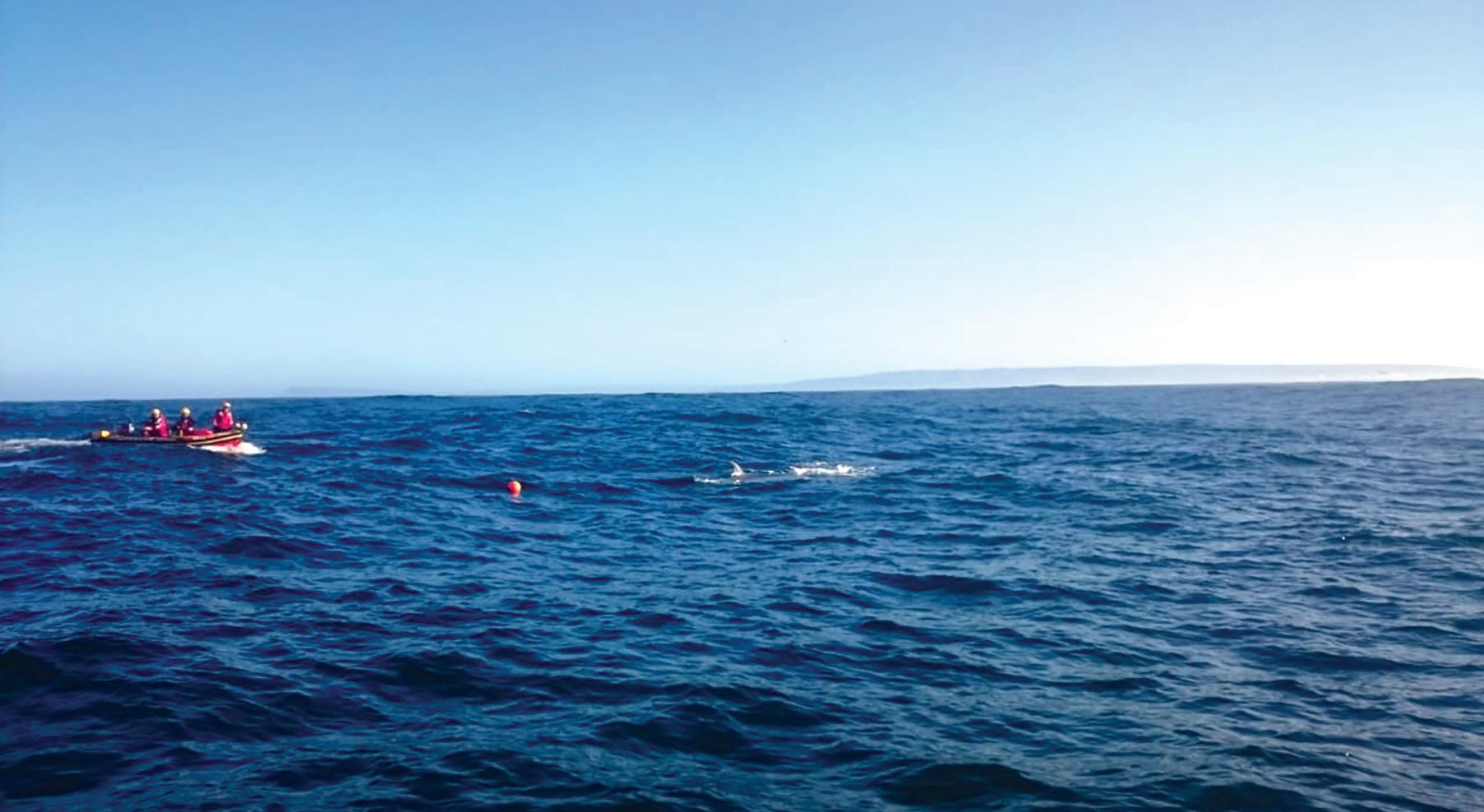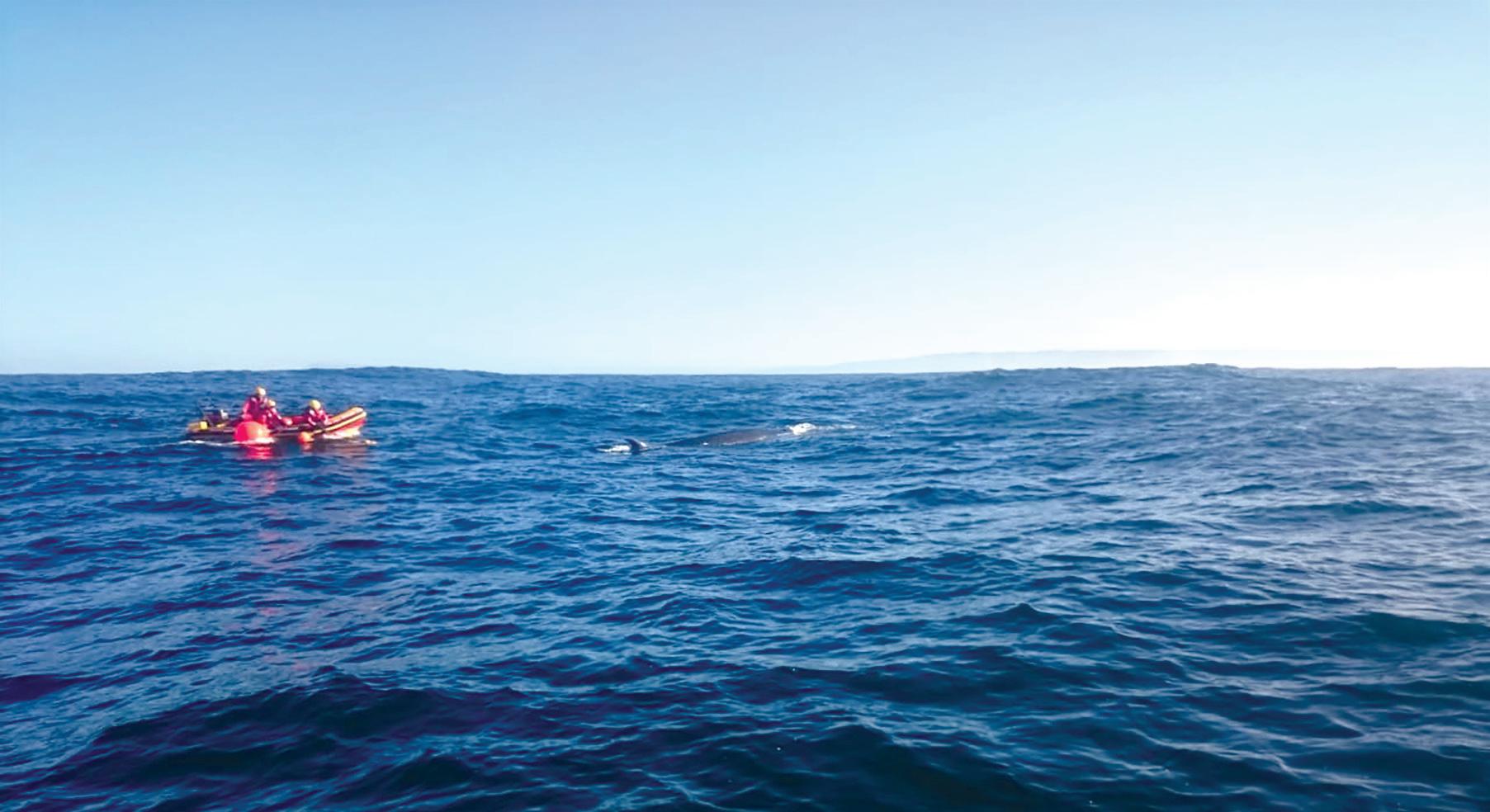
3 minute read
TRICKY BUSINESS
On 22 May this year, Station 30 (Agulhas) crew were eager to help a young Bryde’s whale entangled in ghost fishing net. Despite the animal’s elusive behaviour, the mission was a success. Cherelle Leong tells the story.
BRYDE’S WHALES COMMONLY occur along Agulhus Rescuer launched from Struisbaai Harbour the coast of South Africa but are rarely with three crew members on board and set out sighted. They are light-grey in colour, have to rendezvous with the Rusvic. In the meantime small sickle-shaped dorsal fins and give very light the Station 30 mobile vehicle was dispatched to blows. Even though they can grow up to 16m in Suiderstrand to launch the 4,7m I&J Rescuer 4. The length, they are very agile and deep divers. When sea conditions were fair with a rolling 3m swell and Daniel la Grange, a crew member of FV Rusvic, clear skies, and by 09h17 both rescue vessels had spotted a whale entangled by ropes and buoys reached the location of the whale, approximately south of Agulhas, he not only called Sea Rescue three nautical miles from land. to assist but the skipper and crew also offered The I&J Rescuer 4 carefully approached the to stay with the whale until help arrived – a very animal, identifying it as a 9m juvenile Bryde’s good call, considering how difficult a Bryde’s whale that was trailing lines and buoys. The whale can be to sight. markings on the buoys had been rubbed off and Station 30 (Agulhas ) was alerted just before the rope was covered in algae, indicating that the 08h00 and activated the crew. The 8,5m RIB whale may have been entangled for some time. The crew were able to get close enough to attach a kegding line (a rope to which a number of buoys are attached) to the entanglement to try to slow the whale down. However, as soon as the crew started making their way up the working line, the whale dived. At this point I&J Rescuer 4 was dead in the water, having switched off and raised the motor. They had no choice but to back off, allowing the whale some time to get used to their presence before making another attempt. The whale dived once more, this time into the depths, and disappeared. The rescuers could do nothing but watch and wait, hoping that it would resurface nearby.
After about 20 minutes the keen eyes of the crew spotted it surfacing about 500m from their original location. Once again, the rescue vessels made cautious attempts to approach it. This time the crew from I&J Rescuer 4 used a much longer working line and by the time they got up close to the whale, it was calmly lying below the surface, likely tired from dragging the lines. The crew knew they had to work quickly and efficiently, as there was a good chance the whale could dive again. Getting to within 5m, the whale’s flukes were just ahead of the vessel. They were able to cut one side of the entangled rope using a special picking knife attached to a long pole. Moving quickly to the other side of the whale, they were able to make a second cut and the entanglement slipped away. MAIN: Crew approach the Bryde’s whale once the kegding line has been attached. ABOVE: The rope and buoys recovered from the whale disentanglement operation.

The whale seemed glad to be free of its burden and dived down, resurfacing a short distance away before moving off. Approximately 15m of tangled rope and three buoys were recovered from the water and the operation was completed by 10h30. It appeared the loop of rope had not caused any major injury to the caudal peduncle and the whale is expected to make a full recovery.
It was the first whale disentanglement operation this particular crew experienced, and the expert training they had received from the South African Whale Disentanglement Network paid off. The chance to be so close to such a huge and magnificent sea mammal and to be able to free it successfully was memorable indeed.









